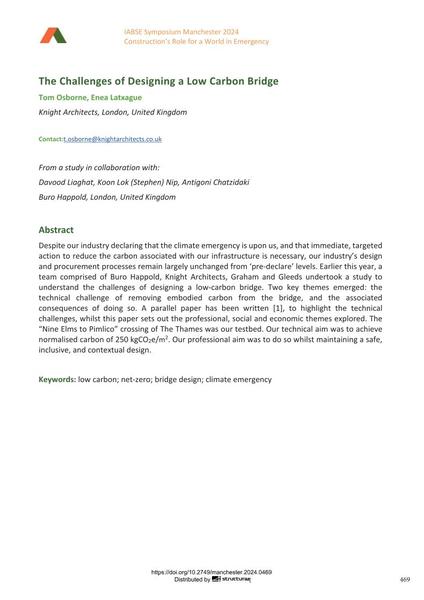The Challenges of Designing a Low Carbon Bridge

|
|
|||||||||||
Détails bibliographiques
| Auteur(s): |
Tom Osborne
(Knight Architects, London, United Kingdom)
Enea Latxague (Knight Architects, London, United Kingdom) |
||||
|---|---|---|---|---|---|
| Médium: | papier de conférence | ||||
| Langue(s): | anglais | ||||
| Conférence: | IABSE Symposium: Construction’s Role for a World in Emergency, Manchester, United Kingdom, 10-14 April 2024 | ||||
| Publié dans: | IABSE Symposium Manchester 2024 | ||||
|
|||||
| Page(s): | 469-477 | ||||
| Nombre total de pages (du PDF): | 9 | ||||
| DOI: | 10.2749/manchester.2024.0469 | ||||
| Abstrait: |
Despite our industry declaring that the climate emergency is upon us, and that immediate, targeted action to reduce the carbon associated with our infrastructure is necessary, our industry’s design and procurement processes remain largely unchanged from ‘pre-declare’ levels. Earlier this year, a team comprised of Buro Happold, Knight Architects, Graham and Gleeds undertook a study to understand the challenges of designing a low-carbon bridge. Two key themes emerged: the technical challenge of removing embodied carbon from the bridge, and the associated consequences of doing so. A parallel paper has been written [1], to highlight the technical challenges, whilst this paper sets out the professional, social and economic themes explored. The “Nine Elms to Pimlico” crossing of The Thames was our testbed. Our technical aim was to achieve normalised carbon of 250 kgCO₂e/m2. Our professional aim was to do so whilst maintaining a safe, inclusive, and contextual design. |
||||
